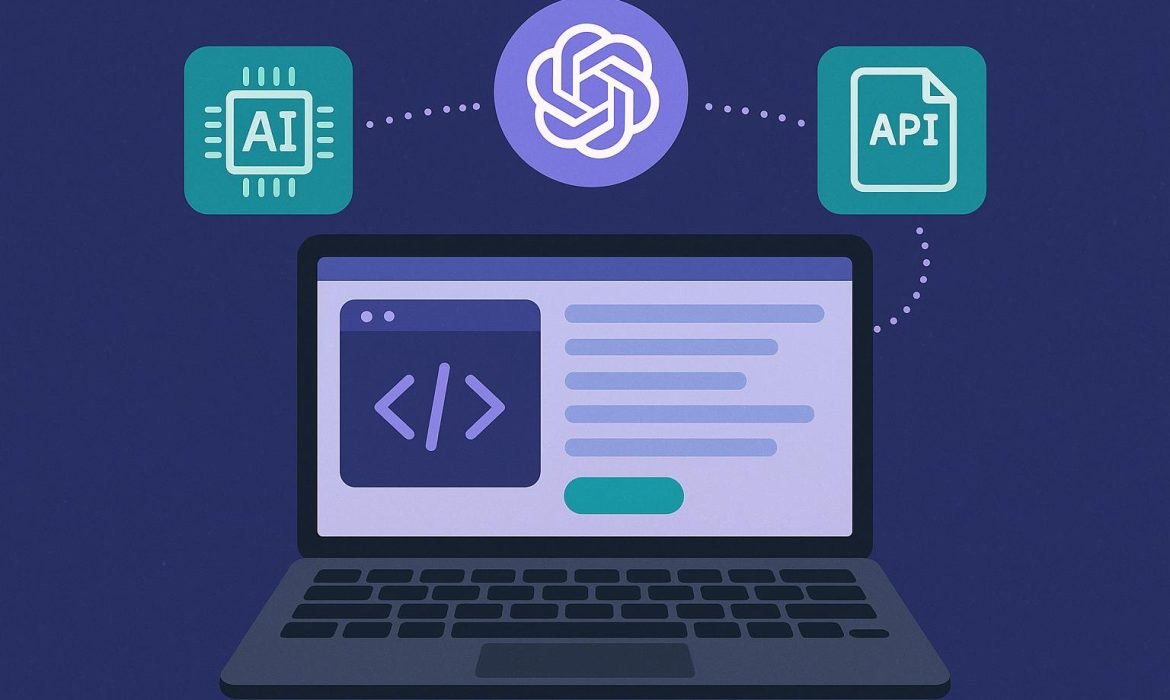Technology is changing the way you work. Artificial Intelligence (AI) is one of the most prominent changes in recent times. Whether it is in chatbots on websites or smart assistants on phones, AI is already present in your everyday lives.
This brings new opportunities to make the apps smarter and useful to businesses and developers. And here, one of the simplest methods to achieve this is by using the OpenAI API to connect your web app. So, in this blog, you will understand the OpenAI API and the steps to run the OpenAI API response on your web app. But first, let’s understand everything from the initial stage.
What is AI in Simple Words?
AI is an abbreviation of Artificial Intelligence. It is the kind of technology that enables a computer and software to do things in a smart manner. For example, AI can:
- Answer questions in natural language
- Translate text into another language
- Write blog posts or emails
- Summarise long articles
- Recognise objects in images
Simply put, AI assists software in accomplishing tasks that normally have to be done by human intelligence. Instead of fixed instructions, AI can interpret its inputs and learn patterns to create something useful.
By introducing AI into a web application, you end up having the application able to find solutions to problems in a more human way. That is why the AI integration has become a trendy feature of modern applications.
What is a Web App?
First off, let’s take a look at what a web app is.
A web app isn’t just a simple web page. This is a website that enables user to interact with it the same way they would use apps on their smartphone or tablet.
For example:
- Gmail is a web application where you are able to send and receive emails.
- Google Docs is a web application service that is used to write and edit documents by making use of your web browser.
- Spotify Web Player is a Web application to listen to music, create playlists.
So, a web app is an application that runs on a browser, but feels more like software rather than the usual web page.
When you combine AI with a web application, you end up with an even more powerful one. The app is no longer a simple data collector or consumer of content but can think and act on its own.
What is an API?
Now let’s look at the term API, because this is the link that connects your web app with AI.
An application programming interface, abbreviated as API, refers to an interface that provides the code. The name could be complicated, but the idea is simple. An API is an interface for communication between two computers.
Think of it this way:
- Your app is like a person who wants to ask a question.
- The API is like a phone line.
- OpenAI is like the expert on the other side of the call who knows the answer.
Your app uploads a query through the API, OpenAI performs the process, and the answer comes back through the API to your app.
Without APIs, your app would need to sort everything out on its own, which is not always possible. APIs facilitate the usage of services created by others.
What is OpenAI’s API?
OpenAI is a company that developed advanced AI applications such as ChatGPT. Such models are taught to read and write like a human being. OpenAI can make these models accessible via the API.
This implies that you do not need to develop an AI solution manually or assemble your own custom system, which would require immense resources and take years to develop. Instead, you can hook your web app into the API offered by OpenAI and immediately leverage the great capabilities of AI.
For example:
- In case you want a chatbot on your website, your application can submit questions from users to the API of OpenAI. The API will send back an intelligent answer, and your application will display on screen.
- In case you want to summarise long documents, your app can send the document to the API of OpenAI. The API will reply with a concise and understandable summary.
- In case you need to produce the product descriptions, you could pass the information to the product, and the API will prepare ready texts.
OpenAI’s API is like a tool that gives your app “superpowers” without making you do all the hard work.
How to Get Started with OpenAI’s API
If you want to use OpenAI’s API in your web app, here are the exact steps you should follow:
1. Create an OpenAI Account
Go to OpenAI’s website and sign up for an account. You can use your email, Google, or Microsoft account to sign in.
2. Set Up Billing
The OpenAI API is not free. To use regular API requests, you must add a payment method.
3. Get Your API Key
Once logged in:
- Go to your dashboard.
- Find the API Keys section.
- Click Create new secret key.
- Copy the key and keep it safe.
Use this key as you would a password. Do not share it with openness and present it in your front-end code yours directly, since anyone might abuse it.
4. Install the OpenAI Library
So when you need to use OpenAI in your web application (or any program), you need a set of ready-made tools that help you to talk with OpenAI servers more easily.
These tools are referred to as a library or a package.
As opposed to writing all of your code, the library provides you with shortcuts and built-in functions to send your text (or prompt) to OpenAI and receive a response.
-
For JavaScript (Node.js)
If your app is built using JavaScript/Node.js, you install the OpenAI library by running this command in your terminal:
npm install openai
npm = Node Package Manager (a tool that downloads and installs software packages for JavaScript apps).
install openai = tells it to download and add the official OpenAI library into your project.
After running this, your JavaScript app can directly use OpenAI functions.
-
For Python
If your app is built using Python, you use pip (Python’s package manager) to install OpenAI’s library:
pip install openai
pip = tool for installing Python libraries.
install openai = downloads OpenAI’s official Python library.
After this, you can import it into your Python script and start making API calls.
5. Make Your First API Call
Once you have installed the OpenAI library and configured your API key, you may begin to work with the OpenAI models.
- Use the client library (Python or JavaScript) to initialize a connection with your API key.
- The API will send an organized response, which will contain the generated text of the model in the output.
Conclusion
The process of integrating AI in your web program through the API of OpenAI is not as complex as it may seem. However, if you find it tough, professionals are always here to help. Partner with Geek Informatic & Technologies Private Limited to bring AI-powered capabilities to your web app. With the help of the API provided by OpenAI, you can integrate chatbots, summarizers, translators, and more in your web app.







